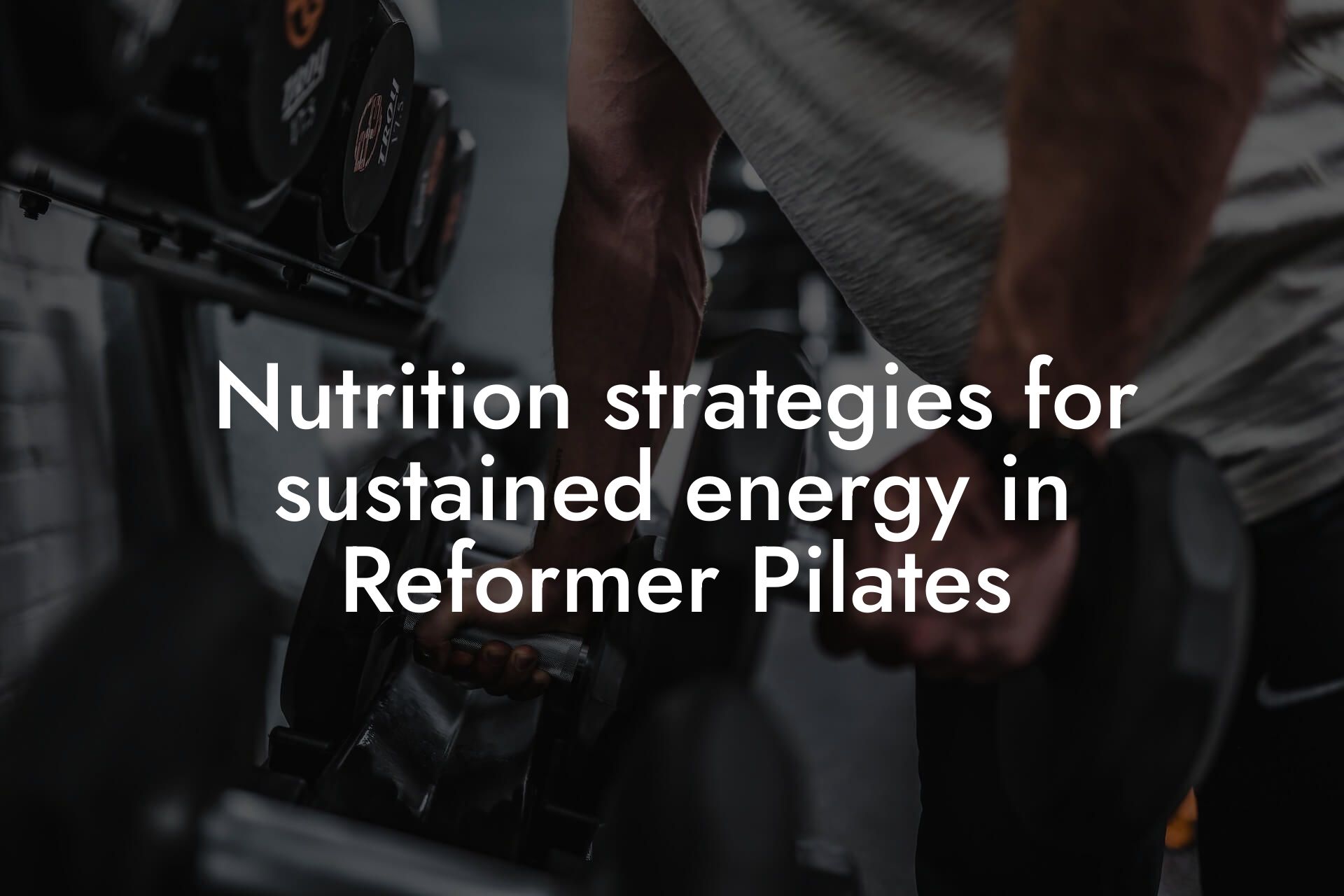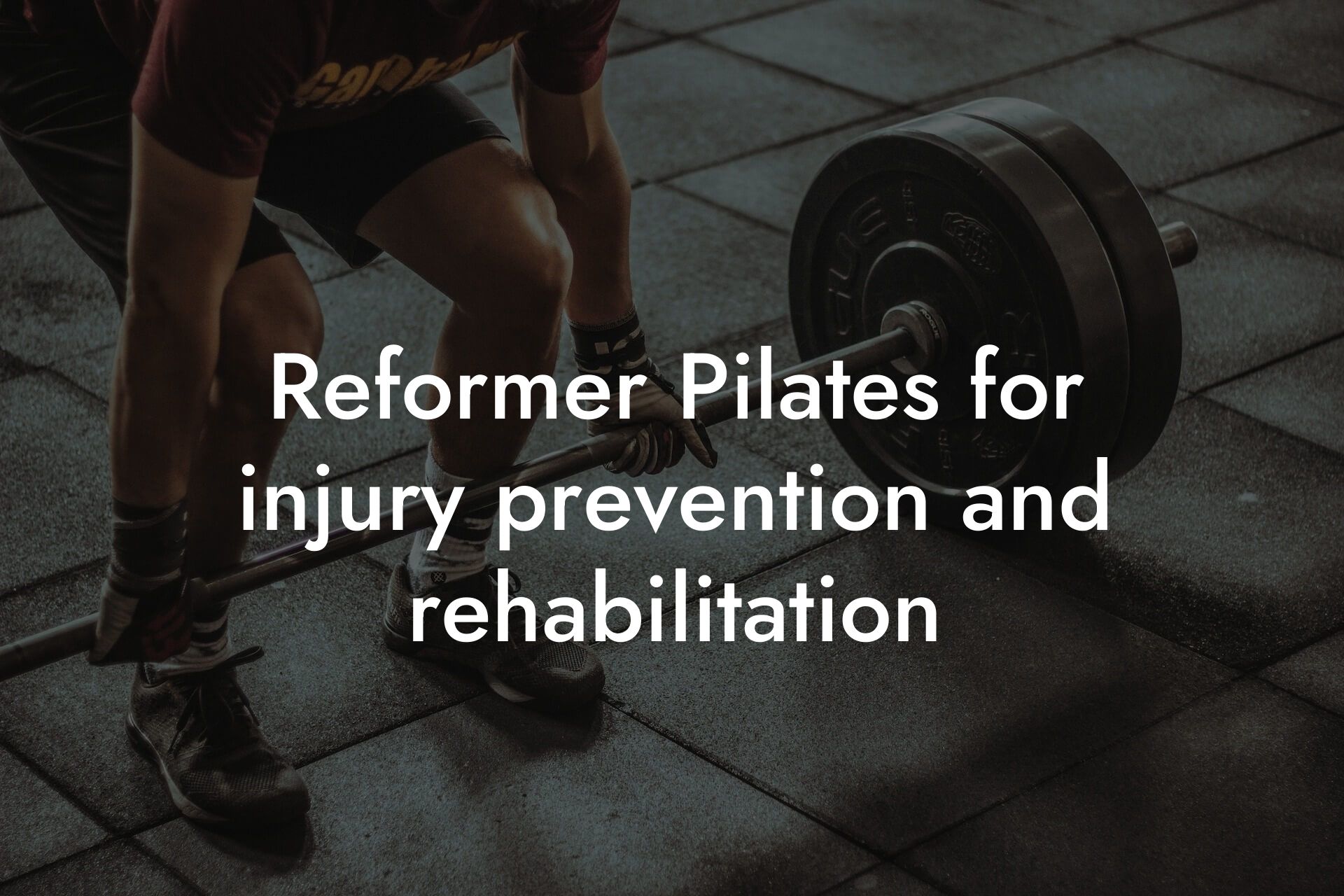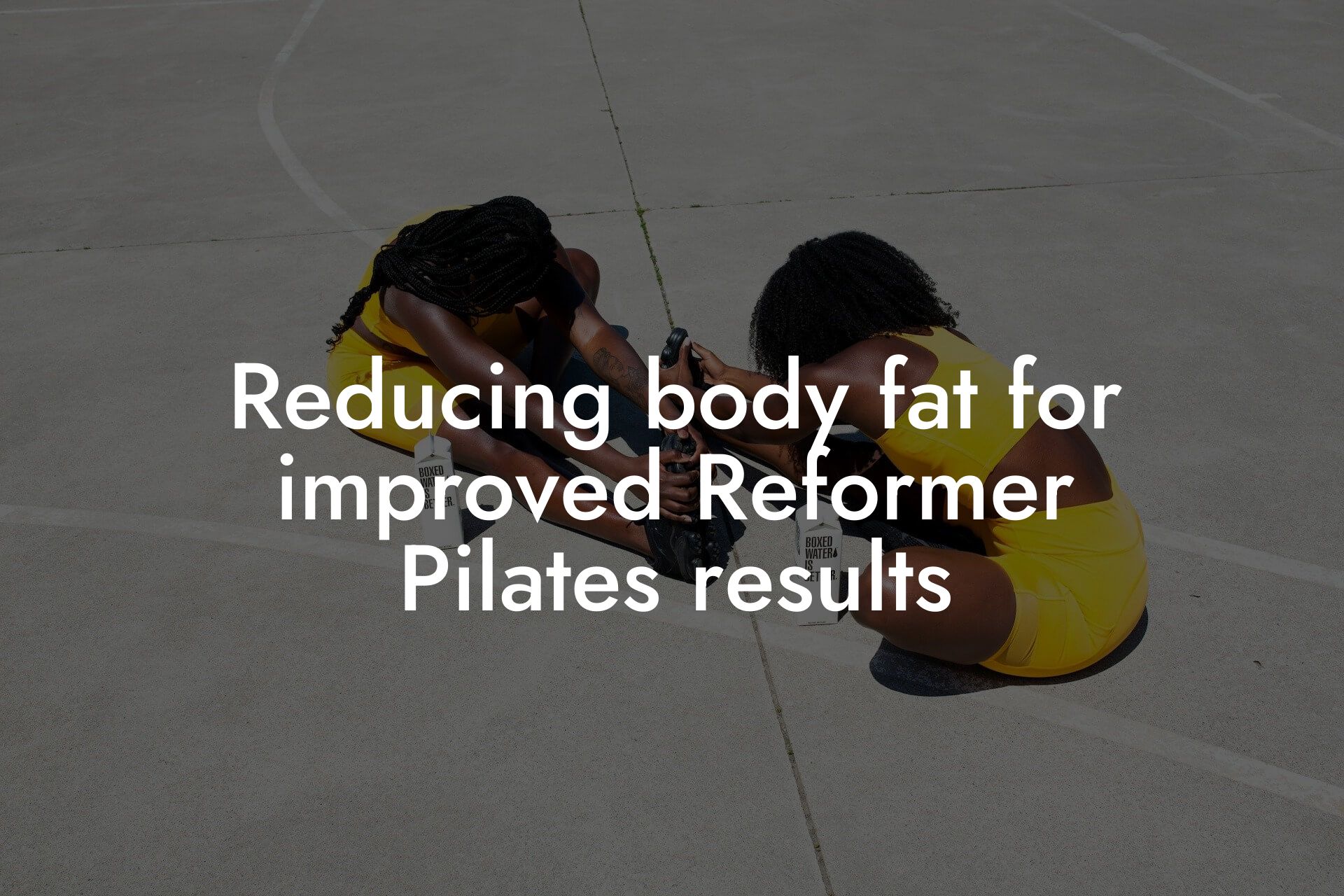As a high-earning professional, taking care of your physical appearance and overall health is crucial to maintaining peak performance in both your personal and professional life. Reformer Pilates is an excellent way to improve your physique, increase bone density, and reduce body fat. However, it's essential to incorporate recovery strategies into your routine to avoid injury, prevent burnout, and optimize the benefits of your Reformer Pilates practice. In this article, we'll delve into the importance of recovery strategies for Reformer Pilates practitioners and provide you with practical tips to enhance your overall well-being.
Table of Contents
- The Importance of Recovery in Reformer Pilates
- Types of Recovery Strategies for Reformer Pilates Practitioners
- Stretching and Foam Rolling for Recovery
- The Role of Nutrition in Recovery
- Hydration and Sleep for Recovery
- Compression Garments and Massage for Recovery
- Creating a Recovery Plan for Reformer Pilates Practitioners
- Frequently Asked Questions
The Importance of Recovery in Reformer Pilates
Recovery is a critical component of any exercise routine, and Reformer Pilates is no exception. When you engage in regular Pilates practice, your muscles, tendons, and ligaments undergo micro-tears, which can lead to inflammation and fatigue. If you don't allow your body sufficient time to recover, you may experience decreased performance, increased risk of injury, and a higher likelihood of burnout. Incorporating recovery strategies into your routine helps to repair and rebuild your muscles, reducing the risk of injury and optimizing the benefits of your Reformer Pilates practice.
Types of Recovery Strategies for Reformer Pilates Practitioners
There are several types of recovery strategies that Reformer Pilates practitioners can incorporate into their routine. These include:
1. Active Recovery: Engaging in low-intensity activities such as yoga, walking, or light stretching to promote blood flow and relaxation.
2. Passive Recovery: Using tools such as foam rollers, massage balls, or compression garments to aid in the recovery process.
3. Restorative Recovery: Incorporating restorative yoga, meditation, or other relaxation techniques to reduce stress and promote relaxation.
4. Nutritional Recovery: Focusing on a balanced diet that includes protein, complex carbohydrates, and healthy fats to aid in muscle repair and recovery.
Stretching and Foam Rolling for Recovery
Stretching and foam rolling are two essential recovery strategies for Reformer Pilates practitioners. Stretching helps to lengthen the muscles, improve flexibility, and reduce muscle tension. Focus on static stretches that target the major muscle groups, including the hamstrings, quadriceps, chest, back, and shoulders. Hold each stretch for 20-30 seconds and breathe deeply, feeling the muscle relax and lengthen.
Foam rolling is another effective way to aid in recovery. This technique involves using a foam roller to apply pressure to specific areas of the body, helping to break down adhesions and promote blood flow. Focus on areas such as the IT band, quadriceps, and hamstrings, using slow, controlled movements to roll out the muscles.
The Role of Nutrition in Recovery
Nutrition plays a critical role in the recovery process for Reformer Pilates practitioners. A balanced diet that includes protein, complex carbohydrates, and healthy fats helps to aid in muscle repair and recovery. Focus on consuming a post-workout meal or snack that includes a mix of carbohydrates and protein within 30-60 minutes of your Reformer Pilates session. This helps to replenish energy stores, promote muscle repair, and reduce muscle soreness.
In addition to a balanced diet, consider incorporating recovery-specific supplements such as protein powder, creatine, or branched-chain amino acids (BCAAs) into your routine. These supplements can help to promote muscle recovery, reduce muscle soreness, and optimize the benefits of your Reformer Pilates practice.
Hydration and Sleep for Recovery
Hydration and sleep are two critical components of the recovery process for Reformer Pilates practitioners. Adequate hydration helps to flush out toxins, reduce muscle soreness, and promote recovery. Aim to drink at least 8-10 glasses of water per day, and consider incorporating electrolyte-rich drinks such as coconut water or sports drinks into your routine.
Sleep is also essential for recovery, as it allows your body to repair and rebuild muscles. Aim for 7-9 hours of sleep per night, and establish a consistent sleep schedule to optimize the benefits of your Reformer Pilates practice.
Compression Garments and Massage for Recovery
Compression garments and massage are two additional recovery strategies that Reformer Pilates practitioners can incorporate into their routine. Compression garments help to improve blood flow, reduce muscle soreness, and promote recovery. Look for garments that provide graduated compression, which helps to improve blood flow and reduce muscle soreness.
Massage is another effective way to aid in recovery. This technique involves using manual therapy to promote blood flow, reduce muscle tension, and aid in muscle repair. Consider incorporating regular massage sessions into your routine, or use self-massage techniques such as trigger point therapy to aid in recovery.
Creating a Recovery Plan for Reformer Pilates Practitioners
Creating a recovery plan is essential for Reformer Pilates practitioners who want to optimize the benefits of their practice. Start by identifying your specific recovery needs, including your goals, fitness level, and areas of tension or injury. From there, develop a comprehensive recovery plan that incorporates a mix of active, passive, restorative, and nutritional recovery strategies.
Be sure to schedule regular recovery sessions into your routine, including activities such as stretching, foam rolling, and massage. Also, prioritize nutrition, hydration, and sleep, as these are critical components of the recovery process.
By incorporating these recovery strategies into your routine, you'll be able to optimize the benefits of your Reformer Pilates practice, reduce the risk of injury, and maintain peak performance in both your personal and professional life.
In conclusion, recovery strategies are essential for Reformer Pilates practitioners who want to optimize the benefits of their practice. By incorporating a mix of active, passive, restorative, and nutritional recovery strategies into your routine, you'll be able to reduce the risk of injury, promote muscle recovery, and maintain peak performance in both your personal and professional life. Remember to prioritize nutrition, hydration, and sleep, and schedule regular recovery sessions into your routine. With a comprehensive recovery plan in place, you'll be able to take your Reformer Pilates practice to the next level and achieve your fitness goals.
Frequently Asked Questions
What are the benefits of incorporating recovery strategies into my Reformer Pilates practice?
As a high-earning professional, you understand the importance of taking care of your physical appearance and overall well-being. Incorporating recovery strategies into your Reformer Pilates practice can help improve your performance, reduce muscle soreness, and enhance your overall physical fitness. By prioritizing recovery, you can optimize your body's ability to adapt to the demands of Pilates, leading to improved flexibility, strength, and overall physical appearance.
Why is recovery important for Reformer Pilates practitioners?
Recovery is essential for Reformer Pilates practitioners because it allows your body to repair and adapt to the physical demands of the exercise. Pilates can be intense, and without proper recovery, you may experience fatigue, decreased performance, and increased risk of injury. By incorporating recovery strategies into your routine, you can maintain peak physical condition, improve your overall health, and enhance your physique.
What are some common recovery strategies used by Reformer Pilates practitioners?
Some common recovery strategies used by Reformer Pilates practitioners include foam rolling, stretching, self-myofascial release, compression garments, and active recovery techniques like light cardio or yoga. Additionally, many practitioners incorporate nutrition and supplementation strategies, such as protein shakes and creatine, to support muscle recovery and growth.
How often should I incorporate recovery strategies into my Reformer Pilates routine?
It's recommended to incorporate recovery strategies into your Reformer Pilates routine 2-3 times per week, depending on the intensity and frequency of your workouts. For example, if you're practicing Pilates 3-4 times per week, you may want to dedicate one or two days to active recovery and one day to passive recovery, such as foam rolling or stretching.
What is active recovery, and how does it differ from passive recovery?
Active recovery refers to low-intensity aerobic activities, such as light cardio or yoga, that promote blood flow and help your body recover from intense exercise. Passive recovery, on the other hand, involves techniques like foam rolling, stretching, and self-myofascial release that target specific muscle groups to promote relaxation and reduce muscle tension.
Can I use recovery strategies to improve my bone density?
Yes, certain recovery strategies can help improve bone density. For example, weight-bearing exercises like Pilates can help stimulate bone growth and density. Additionally, incorporating resistance training and high-impact activities, such as jumping or running, can also help improve bone density. Furthermore, nutrition and supplementation strategies, such as calcium and vitamin D supplements, can also support bone health.
How can I use nutrition to support my recovery and physique goals?
Nutrition plays a critical role in supporting your recovery and physique goals. Focus on consuming a balanced diet rich in protein, complex carbohydrates, and healthy fats. Additionally, consider incorporating supplements like protein powder, creatine, and branched-chain amino acids (BCAAs) to support muscle growth and recovery. Adequate hydration is also essential, so make sure to drink plenty of water throughout the day.
What role does sleep play in recovery and physique goals?
Sleep is essential for recovery and physique goals. During sleep, your body repairs and rebuilds muscle tissue, consolidates memories, and regulates hormones. Aim for 7-9 hours of sleep per night to support your recovery and physique goals. Poor sleep can lead to decreased performance, increased muscle soreness, and a slower metabolism.
Can I use recovery strategies to reduce muscle soreness?
Yes, recovery strategies can help reduce muscle soreness. Techniques like foam rolling, stretching, and self-myofascial release can help reduce muscle tension and promote relaxation. Additionally, incorporating active recovery techniques like light cardio or yoga can help promote blood flow and reduce muscle soreness. Nutrition and supplementation strategies, such as protein shakes and anti-inflammatory supplements, can also help reduce muscle soreness.
How can I incorporate recovery strategies into my busy schedule?
Incorporating recovery strategies into your busy schedule can be challenging, but it's essential for maintaining peak physical condition. Try to dedicate at least 15-30 minutes per day to recovery, whether it's foam rolling, stretching, or active recovery. You can also try to incorporate recovery strategies into your daily routine, such as taking a short walk during your lunch break or doing a quick stretching routine in the morning.
What are some common mistakes Reformer Pilates practitioners make when it comes to recovery?
Some common mistakes Reformer Pilates practitioners make when it comes to recovery include not prioritizing recovery, not incorporating a variety of recovery strategies, and not listening to their body. It's essential to prioritize recovery and incorporate a variety of strategies to support your overall health and fitness goals.
How can I track my progress and adjust my recovery strategy accordingly?
Tracking your progress is essential for adjusting your recovery strategy. Consider keeping a workout log or journal to track your workouts, nutrition, and recovery strategies. You can also use wearable devices or fitness trackers to monitor your progress. By tracking your progress, you can identify areas for improvement and adjust your recovery strategy accordingly.
Can I use recovery strategies to improve my overall physical appearance?
Yes, recovery strategies can help improve your overall physical appearance. By incorporating recovery strategies into your routine, you can improve your body composition, increase muscle mass, and enhance your overall physique. Additionally, recovery strategies can help improve your skin health, reduce inflammation, and promote overall wellness.
How can I stay motivated to prioritize recovery?
Staying motivated to prioritize recovery can be challenging, but it's essential for maintaining peak physical condition. Try to set specific, measurable, and achievable goals for yourself, and reward yourself when you reach them. Additionally, consider finding a workout buddy or accountability partner to help stay motivated. Remember, recovery is just as important as exercise, and prioritizing it will lead to better results in the long run.
What are some common misconceptions about recovery and Reformer Pilates?
Some common misconceptions about recovery and Reformer Pilates include the idea that recovery is only necessary for athletes, that Pilates is a low-intensity exercise that doesn't require recovery, or that recovery is only about stretching and foam rolling. However, recovery is essential for anyone who exercises regularly, and Pilates can be a high-intensity exercise that requires adequate recovery.
How can I incorporate recovery strategies into my Reformer Pilates routine for better results?
Incorporating recovery strategies into your Reformer Pilates routine can help improve your performance, reduce muscle soreness, and enhance your overall physical fitness. Try to incorporate recovery strategies into your routine 2-3 times per week, and focus on techniques like foam rolling, stretching, and self-myofascial release. Additionally, consider incorporating active recovery techniques like light cardio or yoga to promote blood flow and reduce muscle tension.
What are some recovery strategies that can help improve my flexibility and range of motion?
Recovery strategies like stretching, foam rolling, and self-myofascial release can help improve your flexibility and range of motion. Additionally, incorporating active recovery techniques like yoga or Pilates can also help improve your flexibility and range of motion. Remember to hold stretches for at least 30 seconds and focus on major muscle groups like your hamstrings, quadriceps, and hip flexors.
Can I use recovery strategies to reduce my body fat percentage?
Yes, recovery strategies can help reduce your body fat percentage. By incorporating recovery strategies into your routine, you can improve your body composition, increase muscle mass, and enhance your overall physique. Additionally, recovery strategies can help improve your metabolism, reduce inflammation, and promote overall wellness.
How can I prioritize recovery when I have a busy schedule?
Prioritizing recovery when you have a busy schedule can be challenging, but it's essential for maintaining peak physical condition. Try to dedicate at least 15-30 minutes per day to recovery, whether it's foam rolling, stretching, or active recovery. You can also try to incorporate recovery strategies into your daily routine, such as taking a short walk during your lunch break or doing a quick stretching routine in the morning.
What are some recovery strategies that can help improve my bone density?
Recovery strategies like weight-bearing exercises, resistance training, and high-impact activities can help improve your bone density. Additionally, incorporating nutrition and supplementation strategies, such as calcium and vitamin D supplements, can also support bone health. Remember to consult with a healthcare professional before starting any new exercise or nutrition program.
Can I use recovery strategies to improve my overall health and wellness?
Yes, recovery strategies can help improve your overall health and wellness. By incorporating recovery strategies into your routine, you can improve your body composition, increase muscle mass, and enhance your overall physique. Additionally, recovery strategies can help improve your skin health, reduce inflammation, and promote overall wellness.
How can I find a qualified healthcare professional to help me with my recovery strategy?
Finding a qualified healthcare professional to help you with your recovery strategy can be challenging, but it's essential for achieving your fitness goals. Consider consulting with a fitness professional, physical therapist, or nutritionist who has experience working with clients with similar goals and needs. You can also ask for referrals from friends, family, or coworkers who have achieved success with their fitness goals.
Here are some related articles you might love...
- Nutrition strategies for sustained energy in Reformer Pilates
- Reformer Pilates for injury prevention and rehabilitation
- Reducing body fat for improved Reformer Pilates results
- How to integrate Reformer Pilates into a balanced fitness routine
- Maintaining muscle tone and flexibility with Reformer Pilates
- How body composition impacts Reformer Pilates performance
- Bone density and its role in Reformer Pilates practice
- Using DEXA scans to optimize Reformer Pilates training
- The importance of core strength in Reformer Pilates
Zak Faulkner
Zak Faulkner is a leading authority in the realm of physical health and body composition analysis, with over 15 years of experience helping professionals optimise their fitness and well-being. As one the experts behind Tano Performance Group, Zak has dedicated his career to providing in-depth, science-backed insights that empower clients to elevate their physical performance and overall health.
With extensive knowledge of DEXA technology, Zak specializes in delivering comprehensive body assessments that offer precise data on body fat, muscle mass, bone density, and overall physique. His expertise enables individuals to make informed decisions and achieve their fitness goals with accuracy and confidence. Zak’s approach is rooted in a deep understanding of human physiology, combined with a passion for helping clients unlock their full potential through personalised strategies.
Over the years, Zak has earned a reputation for his commitment to excellence, precision, and client-focused service. His guidance is trusted by top professionals who demand the best when it comes to their health. Whether advising on fitness programs, nutritional strategies, or long-term wellness plans, Zak Faulkner’s insights are a valuable resource for anyone serious about taking their health and fitness to the next level.
At Tano Performance Group, Zak continues to lead our Content Team revolutionising how professionals approach their physical health, offering unparalleled expertise that drives real results.




